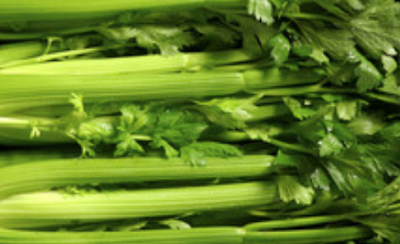With October arriving this next week, we're sliding into the fall menu season. Most of us think of summer as the great fresh produce season for value. Fall can also offer several varieties of fresh vegetables that are budget-friendly. I do stock up on canned vegetables in fall, but we save these for use in winter when fresh produce is much more expensive.
Here are 6 of my favorite vegetables that are very budget friendly in fall.
(All of the storage times are for purchased produce, which may have been harvested weeks before your purchase.)
cabbage -- Cabbage is such a budget-friendly vegetable practically year round in my area. If I don't have them ready in the garden, I buy a head every time I do a major grocery shopping. But I find the quality and price is better in this favorite in fall.
Green cabbage is the thriftiest, but red cabbage is just another 20 cents per pound in my local stores. So I like to buy red cabbage a few times a season for visual interest and phytochemicals.
Lacking a root cellar, cabbage stores well in the refrigerator for up to 2 months. I keep mine in the plastic produce bag from the store. If I'm buying several heads and plan on storing them the maximum time, I wrap each head in a piece of flour sack or tea towel then place in a plastic bag. This cuts down on spoilage by keeping the cabbage leaves from direct contact with the plastic bag.
There are some varieties of winter squash that keep especially long, such as turban, buttercup, and Hubbard squash. Keep in mind, the tougher the skin, the longer the storage potential.
pumpkin -- Choose pumpkins that have the stem intact. Store as winter squash, however pumpkins are thinner skinned than squash and won't keep as long, perhaps 6 weeks.
In early December, I cook any remaining fresh pumpkins to puree and freeze. Don't forget to cook up your carved Jack o'Lantern on November 1. For my entire adult life, I have always used regular field pumpkins for cooking and pureeing. They're more watery than pie pumpkins, but they're also a lot less expensive.
sweet potatoes --Fresh sweet potatoes go on sale just before Thanksgiving. While the sweet varieties don't store as well as white potatoes, you can still keep them for a month or more in a cool and dry location, much like the conditions needed for winter squash storage.
Sometime in late December, I freeze whatever fresh sweet potatoes I have remaining. An easy way to store sweet potatoes in the freezer is to bake them whole and freeze.
I scrub them well, pierce with a fork, then bake at 425 degrees F for about an hour. After cooling to room temperature, I transfer the baked sweet potatoes whole to a ziplock bag and toss them into the freezer. They'll peel easily once thawed to use mashed or cut into chunks. Alternatively, you can reheat the thawed sweet potatoes in a 350 degree oven for 25-30 minutes, then split and top with butter and spices, as desired.
celery -- Celery adds great flavor to cooked dishes and fresh in salads or as a crudité. While celery may be more expensive per pound than veggies like winter squash, it doesn't take much in recipes to get that flavor. Use the leaves in soups/stews, rice pilafs, egg and tuna salad, and green salads. The best deal on celery is usually just before Thanksgiving.
If you're buying extra celery to use at a later date, you can chop and freeze celery to add to soups, stews, stuffings, pilafs.
To store celery fresh, you'll want a cold (40 degrees) and humid spot. The crisper drawer in your fridge is the perfect place. You may have read of using aluminum foil to keep celery for long durations. This actually does work. If you wrap the celery loosely in foil with the ends left open, ethylene gases which could hasten rot can escape. Alternatively, wrapping celery in damp paper towels, then placing in a well-pierced plastic bag is a great way to store fresh celery.
You can expect fresh celery to keep in the fridge's crisper for about a month to perhaps a little longer if you're lucky. I like to cut the leaves off the bundle of celery and use or freeze before storing the rest of the ribs longterm.
whole carrots -- Carrots are a budget's friend year round. In fall, however, I often find the 25-lb bags of carrots for less per pound than in the 5 and 10-lb bags at stores like WinCo, the produce stand that shuts down on November 1, and at the restaurant supply. If you happen to find a deal on fresh, whole carrots in smaller bags, you can stock up for future use.
I've had the best success storing fresh carrots for a couple of months if I remove them from the plastic bag in which they came and sort out the damaged carrots that look like they'll keep for a shorter period. These are set aside to use first. I then wrap smaller bundles of the sound carrots in paper towels then place in plastic bags. The paper towels prevent moisture contact with the carrots and delay rot. Carrots stored this way in the fridge will keep a couple of months. Any limp carrots can be rehydrated by soaking in cold water in the fridge for 30 minutes.








